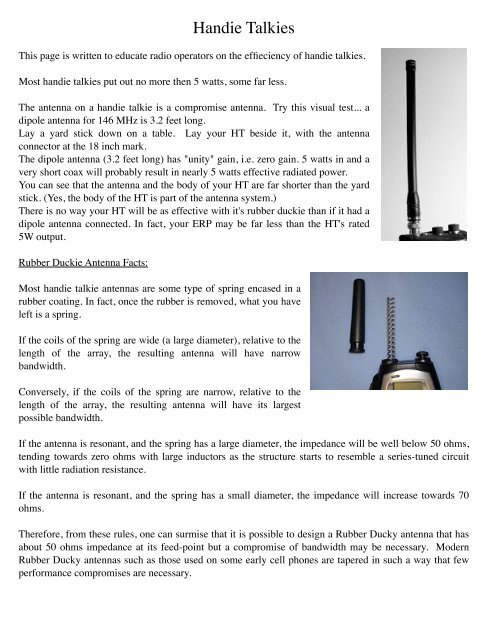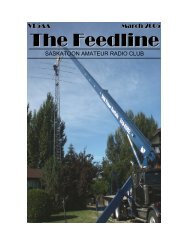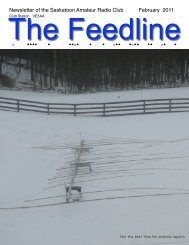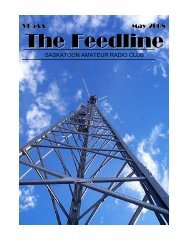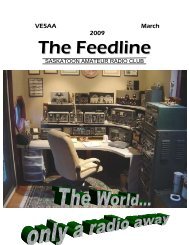Solar Flare DiscoveryOne hundred and fifty two years ago, a man in England named Richard Carrington discovered solar flares.It happened at 11:18 AM on the cloudless morning of Thursday, September1st, 1859. Just as usual on every sunny day, the 33-year-old solar astronomerwas busy in his private observatory, projecting an image of the sun onto ascreen and sketching what he saw. On that particular morning, he traced theoutlines of an enormous group of sunspots. Suddenly, before his eyes, twobrilliant beads of white light appeared over the sunspots; they were so brighthe could barely stand to look at the screen.Carrington cried out, but by the time a witness arrived minutes later, the firstsolar flare anyone had ever seen was fading away.It would not be the last. Since then, astronomers have recorded thousands of strong flares using instrumentsranging from the simplest telescopes in backyard observatories to the most complex spectrometers onadvanced spacecraft. Possibly no other phenomenon in astronomy has been studied as much.After all that scrutiny, you might suppose that everything about solar flares would be known. Far from it.Researchers recently announced that solar flares have been keeping a secret.“We’ve just learned that some flares are many times stronger than previously thought,” says University ofColorado physicist Tom Woods who led the research team. “Solar flares were already the biggest explosionsin the solar system—and this discovery makes them even bigger.”NASA’s Solar Dynamics Observatory (SDO), launched in February 2010, made the finding: About 1 in 7flares experience an “aftershock.” About ninety minutes after the flare dies down, it springs to life again,producing an extra surge of extreme ultraviolet radiation.“We call it the ‘late phase flare,’” says Woods. “The energy in the late phase can exceed the energy of theprimary flare by as much as a factor of four.”What causes the late phase? Solar flares happen when the magnetic fields of sunspots erupt—a processcalled “magnetic reconnection.” The late phase is thought to result when some of the sunspot’s magneticloops re-form. A diagram prepared by team member Rachel Hock of the University of Colorado shows howit works.The extra energy from the late phase can have a big effect on Earth. Extreme ultraviolet wavelengths areparticularly good at heating and ionizing Earth’s upper atmosphere. When our planet’s atmosphere isheated by extreme UV radiation, it puffs up, accelerating the decay of low-orbiting satellites. Furthermore,the ionizing action of extreme UV can bend radio signals and disrupt the normal operation of GPS.SDO was able to make the discovery because of its unique ability to monitor the sun’s extreme UV outputin high resolution nearly 24 hours a day, 7 days a week. With that kind of scrutiny, it’s tough to keep asecret--even one as old as this.
Handie TalkiesThis page is written to educate radio operators on the effieciency of handie talkies.Most handie talkies put out no more then 5 watts, some far less.The antenna on a handie talkie is a compromise antenna. Try this visual test... adipole antenna for 146 MHz is 3.2 feet long.Lay a yard stick down on a table. Lay your HT beside it, with the antennaconnector at the 18 inch mark.The dipole antenna (3.2 feet long) has "unity" gain, i.e. zero gain. 5 watts in and avery short coax will probably result in nearly 5 watts effective radiated power.You can see that the antenna and the body of your HT are far shorter than the yardstick. (Yes, the body of the HT is part of the antenna system.)There is no way your HT will be as effective with it's rubber duckie than if it had adipole antenna connected. In fact, your ERP may be far less than the HT's rated5W output.Rubber Duckie Antenna Facts:Most handie talkie antennas are some type of spring encased in arubber coating. In fact, once the rubber is removed, what you haveleft is a spring.If the coils of the spring are wide (a large diameter), relative to thelength of the array, the resulting antenna will have narrowbandwidth.Conversely, if the coils of the spring are narrow, relative to thelength of the array, the resulting antenna will have its largestpossible bandwidth.If the antenna is resonant, and the spring has a large diameter, the impedance will be well below 50 ohms,tending towards zero ohms with large inductors as the structure starts to resemble a series-tuned circuitwith little radiation resistance.If the antenna is resonant, and the spring has a small diameter, the impedance will increase towards 70ohms.Therefore, from these rules, one can surmise that it is possible to design a Rubber Ducky antenna that hasabout 50 ohms impedance at its feed-point but a compromise of bandwidth may be necessary. ModernRubber Ducky antennas such as those used on some early cell phones are tapered in such a way that fewperformance compromises are necessary.


